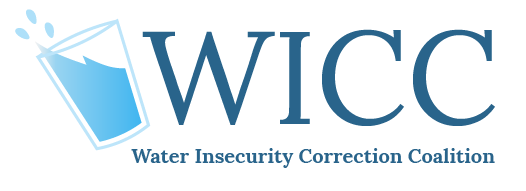Environmental Justice
ENVIRONMENTAL JUSTICE POLICY & COMMITMENTS
People matter. Environmental nonprofit organizations have historically centered efforts on issues facing white people, and their leadership has reflected that. In 2022, over 60% of the leadership at environmental nonprofits were white, despite non-white Americans experiencing environmental injustices and exposure to environmental harms at disproportionate rates.
Environmental justice research has found that disproportionate environmental burdens, especially water security issues, are experienced by low-income communities and communities of color. Studies also show that there is a link between socioeconomic status and water insecurity; a 2019 epidemiological study found an association between nitrate concentrations and proportions of Hispanic residents in the United States. Environmental justice in water insecurity organizations can be achieved more effectively if a) programming meaningfully targets and includes the communities experiencing water insecurity issues, and b) said organizations are made up of people that understand the issue and have actually experienced it.
To ensure that the Water Insecurity Correction Coalition is part of the national effort to address environmental injustice, WICC has examined our own practices and is committed to expanding our programming to better encapsulate environmentally just practices. We want our internal makeup to sufficiently reflect the nature of the problem we address by representing those that have or are experiencing water issues. We want to ensure our external programming is meaningful, wanted, and effective. We want the policy issues we advocate for to be reflective of the needs of the communities we work with and for by consulting and meaningfully engaging community members in project development and implementation.
Since its founding, WICC has utilized a spirit of ingenuity and dedication to innovative approaches to the complex issue of water insecurity in the United States. In that vein, we want to pioneer a meaningful approach to environmental justice in the water insecurity sector. We hope that our internal and external commitments, as outlined in our Environmental Justice Strategy, reflect that.
Internal Goals
REPRESENTATION: Improve representation of affected communities within our organization.
EQUITY: Ensure that organization practices are equitable and promote diversity in all forms.
UNDERSTANDING: Improving our understanding of how water insecurity affects marginalized communities differently than more privileged communities.
COMMUNITY: Ensuring that the projects we implement are developed with a cohesive understanding of the community/group the project targets by meaningfully consulting and partnering with localized stakeholders, leaders, and residents in all phases of the project.
External Goals
PROJECTS: Target environmental justice issues and environmentally injusticed communities for present and future water insecurity projects.
PARTNERSHIPS: As an organization, make an effort to partner with organizations that represent and are composed of individuals from vulnerable and environmentally injusticed communities.
POLICY: Raising awareness of current federal, state, and local legislation and advancing policy issues that focus on uplifting environmentally injusticed communities and protecting particularly vulnerable ones from future water insecurity.
PUBLIC: Reporting to the public on how DEI and EJ commitments are progressing.
Diversity, Equity, & Inclusion and Environmental Justice (DE) Committee
The Diversity, Equity, and Inclusion and Environmental Justice Committee, also known as the DE Committee, will bring forth perennial suggestions on acting upon DEI values and improving environmental justice programming and practices.

